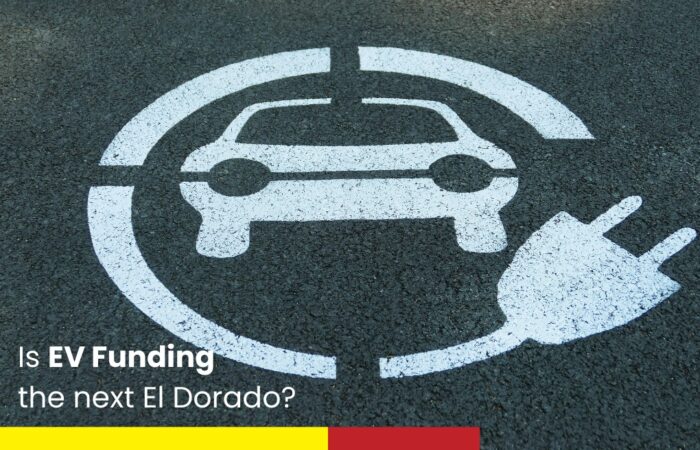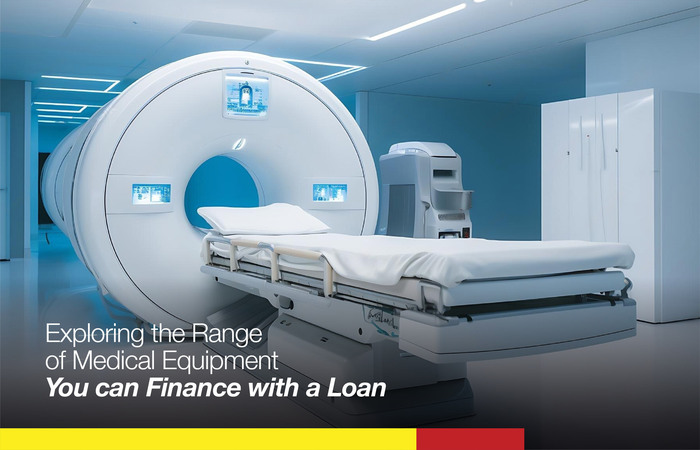When it comes to SMEs, financing becomes a crucial aspect for their smooth functionis being a financer that smooth? What are the challenges the entity faces, how creditgurantee schemes come into play, how do they tackle the fluctuating business enviroTo answer these questions and more, ETBFSI had an exclusive interaction with KV SrinExecutive Director and CEO of Profectus Capital.
Since its inception a few years back, Profectus Capital has been at the forefront in providing secured financial solutions to SMEs. The NBFC has been leveraging Cluster Specific Term Loans, Working Capital Term Loans, Supply Chain Financing Solutions and NBFC and MFI Funding.
Small and Medium-sized Enterprises (SMEs) are very crucial wing of theIndian economy and aspires to differentiate itself in competitive spaceby being innovative and agile in its approach. In order to maintain its work flow funding is essential and must bematched with precise requirements for maximum efficiency. To meetthis demand, Profectus Capital has been pivotal in the industry providingapt solution to these small players through its range of products andservices.
To understand more about how they work and how they look at the financing to SME business, apart from other topics, we had an exclusive interaction with KV Srinivasan, Executive Director and CEO of Profectus Capital. KV Srinivasan talked on a range of topics including Annual Budget 2023, role of credit guarantee schemes, digital participation in financial services, fluctuating MSME businesses, among others.
Here are the edited excerpts:
Q: How do you see the Union Budget 2023?
Union Budget 2023 was welcoming for the small businesses and MSME friendly. It has continued the focus on growth and infrastructure development. Over the past two years the government has also focused on boosting the MSME sector.
Two provisions in this budget stand out – one, increase in the capital for the Credit Guarantee Trust by Rs 6000 crs would enable the Trust to provide additional credit guarantee for MSME loans of up to Rs 2 lakh crs; the second, increase in the turnover limit for presumptive taxation on MSME to Rs 3 crs (provided that cash collections in the business in not more than 5%). The second provision, while easing the taxation procedure on smaller MSMEs, also sends out the message that they need to move to digital and other verifiable means of doing business (thereby reducing the cash economy)
The message appears to be – “be transparent and we will support you”. The initiative to launch version 4 of PM Kaushal Vikas Yojana should also help MSMEs by providing larger number of skilled manpower.
Q: How do you see the role of credit guarantee schemes in context of lending to small players?
Credit Guarantee Fund Trust for Micro and Small Enterprises (CGTMSE) is an extremely powerful one. Most of the lenders generally tend to play safe, and when it comes to taking a 50-50 kind of a call, then they generally feel to play a little safe because you don\’t know what the risks are being covered etc.
Now, since there is a government guarantee coming across in the lending, the ability of the lender to take a slightly more aggressive call is very critical. What has happened specifically for MSMEs which do not have collaterals to provide, the CGTMSE comes in very, very handy. Because sometimes the system is skimmed, the bank cannot ask for collateral.
And a good amount of up to Rs 2 crores is provided under the scheme for each of the borrowing entities, which is I would say probably covers the 90% of the MSMEs that we have in the country or probably more. So that\’s a very good thing to enhance that limit from current position. So therefore, lenders will be in a position to lend more confidently and probably larger amounts of money without taking any additional collateral or risk.
Q: How do you see the financial performance of Profectus Capital in Q3. What’s the roadmap
ahead?
Profectus Capital is a 100% SME-focused lender. We have very specific focus on certain specific industries which are the growth engines as far as the India\’s future GDP ambitions are concerned.
What we have done is that what we call a cluster-oriented approach, we have tried to bring-in very flexible credit policies to suit the individual clusters of lending.
For example, in the textile industry, the Surat guy and Coimbatore guy are two different people. The business that they do are different, the markets they cater to are different. So you need to create a policy which is specific. You can\’t say that one-size fits all kind of a policy will work well for them.
So that is exactly what we are trying to bring across to create a product or offering which makes it just a lot more meaningful for the individual borrower rather than sticking to a certain policy.
This is something which really helped in terms of our ability to reach out to the needy and the deserving MSMEs and provide a lot of funding. We intend to continue with this kind of a focused approach since now we\’ve got experience of five years in the industry and built a very strong foundation whether it is technology or people or the processes. It’s now the time for us to scale up significantly.
We\’ve been growing almost at 80% CAGR per annum, and we intend to continue it that way. And now that most of the fixed costs have been already invested, the future profitability will continue to grow faster and faster than where we are.
The one thing that I\’m most happy about is the credit quality that we have got on the books. In spite of two rounds of pandemic and all the kinds of headwinds that we\’ve seen in the past four years, our credit quality is absolutely impeccable. We would definitely like to continue that journey.
‘Focus upon credit quality and profitability, while going very aggressively at the same time’ is our motto. In terms of investments, we have done every investment that you need to scale up.
If I talk about our IT backbone, and the kind of FinTech network that we have put into place, it can
easily scale up to 15-20 thousand crores of book which is 10 times than what we are today. So we don\’t need to put any major investments going forward, instead it\’s the time to reap the
investment that we have already made.
Q: How do you see the role of innovation, specifically the AI and related tools, in the BFSI
sector?
Technology is something which is changing the lending industry in a very fast and pronounced way and this trend will continue. More importantly, with AI coming into the picture, it is now time to tae the technologial support to a next level.
From our perspective, we see technology playing a very strong supportive role as far as our decision making is concerned. The key difference between a pure-play FinTech lender and Profectus Capital is that we do not allow
the machine to decide. The machine, as far as we are concerned, is a decision aid. We take the recommendation and the analysis done by the technology, which is giving a better feel to the credit person for him or her to actually go to the customer and do an additional due diligence and take a very considered call.
With technology what\’s happening is that a lot of analysis that used to be done manually is being done in a much faster and more reliable fashion. When it comes to assessing the informal income, that MSMEs tend to have, it is very easy for us to triangulate different points and try to arrive at the truth. For instance, GST data compared to bank data,
compared to the amount of activity that is happening, etc.
So it becomes very easy for us to authenticate the data, which is provided by the MSME, when we go for an appraisal, very easily, and that gives us a lot of more comfort and able to take more aggressive calls.
Another aspect is we are able to put-in with more experience an AI based scoring model, which will be a very good decision-aid for the credit manager before the final decision is taken.
Now, this is the self-learning model, as and when the data keeps on building up, this will become sharper and sharper as we go along. So we are now doing the testing of that to a very large extent. Today, almost 90% of our loans actually disbursed are end-to-end from the time we meet the customer, and take the KYC document or application form down all the way to the disbursement of the loan is now being done through the help of mobile.
The customer doesn\’t have to provide any paper, everything is done through an OTP and PDFs. Entire customer acquisition process is now digital which makes it very easy, simple and painless for the customer. He don\’t have to keep on signing on 20,000 pages, but it\’s all done through a nice, easy manner.
If the customer is not very comfortable using technology, that\’s a different issue. There are some people who still do that, but almost 85 to 90% of our customers are very comfortable in doing that. So customer acquisition, underwriting, and as well as for monitoring any early warnings say we have a digital very strong early warning system that tells us whether the customer is behaving properly, is there any early warning in terms of his tendency to default in the future, etc., and we are able to spot delinquencies much earlier and go back and correct the situation before it becomes too late.
At the same time, if the customer is growing, and there is a positive reason for him to take more loans, we are able to reach out to him and provide with a second loan.
So it\’s also a positive marketing opportunity and lead generation opportunity for us. So, whether it is servicing, underwriting or even customer acquisition, technology is playing an important role, and will keep mounting as we go along.
Q: How do you see the role of fintechs collaborating with NBFCs. Is it good to collaborate or a standalone working mechanism is better?
At the end of the day, banks have to collaborate with NBFCs and NBFCs have to collaborate with fintechs. With this, the entire industry will benefit and more importantly, customer will get benefits. Instead of fighting with each other, we are actually collaborating and creating a nice ecosystem where everybody find its own place under the Sun. I think collaboration between NBFCs or Banks or Fintechs is something which is already there, and it will become more and more pronounced. There is no point in reinventing the wheel.
As an NBFC, we can do exactly what a Fintech is doing. But then the idea is why do you want to reinvent the wheel? If somebody says the wheel is round then no matter what research you do, you will also come to the same conclusion. So the idea is not to waste money, but use the available technology so that you\’re able to reduce the cost of offering and improve the efficiency to the customer so that the overall ecosystem benefits.
NBFCs are very good at lending, but they may not be good at technology. But if somebody is good at technology, why not partner?
Q: MSME businesses witnessed downfall with many shut down happening. How do you this
development?
I will look at it in two different ways. The first one is from a philosophical perspective. Now, it is a historical fact that out of 100 startups, 50 of them will fail in the first three to four years time. But the remaining ones will continue to do well in the near future as well. So, at an ecosystem level you will have failures and exits which will happen which is good in a long run as the efficient people will continue. It\’s simply the Darwinian theory of survival of the fittest. This is not something which is to be seen in a negative way at all, not every businessman becomes successful. But once that initial phase of uncertainty or the difficulty period is taken care of, then each one progresses in a way. Their progress is affected only by a one\’s own management capability and the market. Management capability can be improved with training and better skills, but market sometimes is very uncertain.
If you look at the pandemic and the resultant fallout that happened with so many sectors like hospitality, transportation, schools, etc., they were affected very badly.
Today, when they look at credit during that Black Swan event time, some people would have defaulted, some would have definitely closed shop. But the ones who are today standing are actually emerging much stronger.
If we are talking about next five to seven years for India to grow at an average of 7% on a real basis, which means about 13-14% on a nominal terms, the capital expenditure and the credit growth for India as a whole will have to be at least three times.
So, anywhere between 30 to 35% of loan growth and investment growth is bound to happen. And obviously, SMEs will have their own share. Today, if you look at most of the sectors, other than one or two industries which are primarily import-dependent or China dependent, most of them have recovered from the effects of the pandemic and today they\’re doing well.
Anybody who\’s very internal focused, whether it is India focused or non China focused, I think the uncertainties are far lower today than what it was.
Q: Is it a challenge to deal with the fluctuating market situations, considering small ticket size
players involved?
Let\’s say if there\’s one particular industry which is not doing well, naturally the lenders will have to be more cautious there or maybe scale down in terms of the future investment.
But from a strategic perspective, what we have done at Profectus Capital is that we have selected 11 of the sunrise industries. Three in the service sector namely education, healthcare and hospitality and about eight of them in the manufacturing side, which includes pharma, food processing, chemicals and plastics, etc.
If one particular sector will go down, it’s not necessary that every other will also go down. By internally adjusting the focus on each of these 11 industries, at the corporate level we are able to grow faster and faster. So it is that cluster-approach which is actually helping us to overcome any specific one industry or two industries downfall. We should be in a position to play one industry versus the other, and change the focus internally and manage situations much better than others.
Q: What are your views on the Digital Collection?
We don\’t have any single cash collection process, our entire collection, whether through EMI or even the defaulted customer collection, happens only through electronic means. Very rarely we pick up a cheque. It is either through UPI or any of those electronic means. So 100% of our collection happens only electronically. And the second factor is that even from our own collection, staff perspective, they have all been equipped with the collection tool which is there on their mobile.
This tells them about which customer to go to, what is the issue, what is the situation with the customer, is there a customer nearby, etc. So it becomes a very efficient way to administer the collection activity. Also from the customer\’s perspective, the moment he makes an electronic payment, immediately the collection person sitting in front of him can issue him an electronic receipt as well.
So, the customer is also comfortable that the money is reached to the right spot and there is no question of any reconciliation problem or cash being embezzled or any other leakage. Entirely, end-to-end collection in Profectus today is done through digital means.





